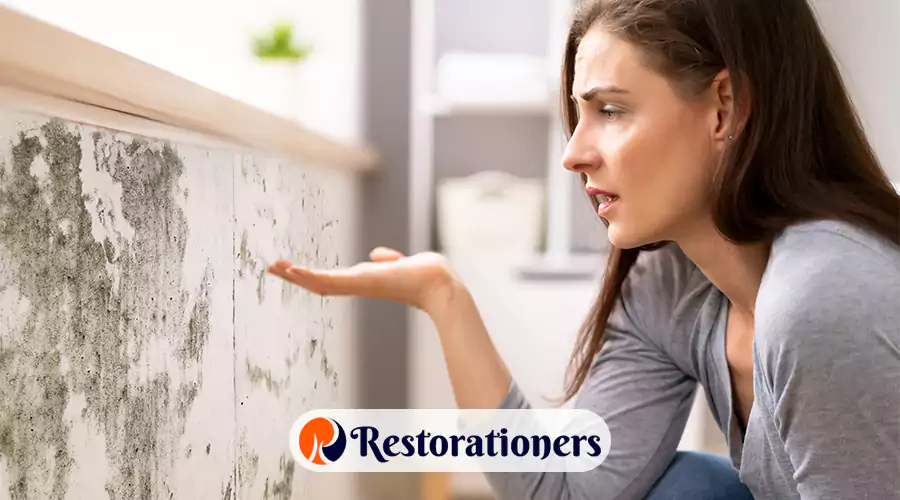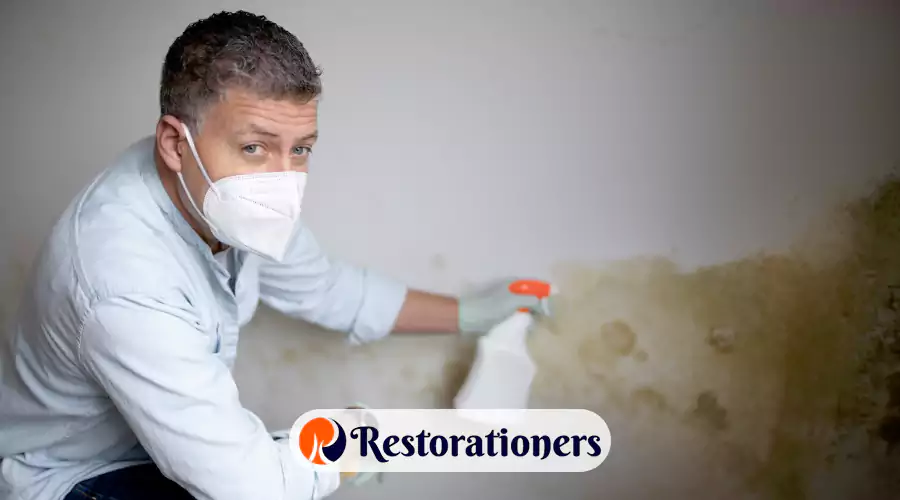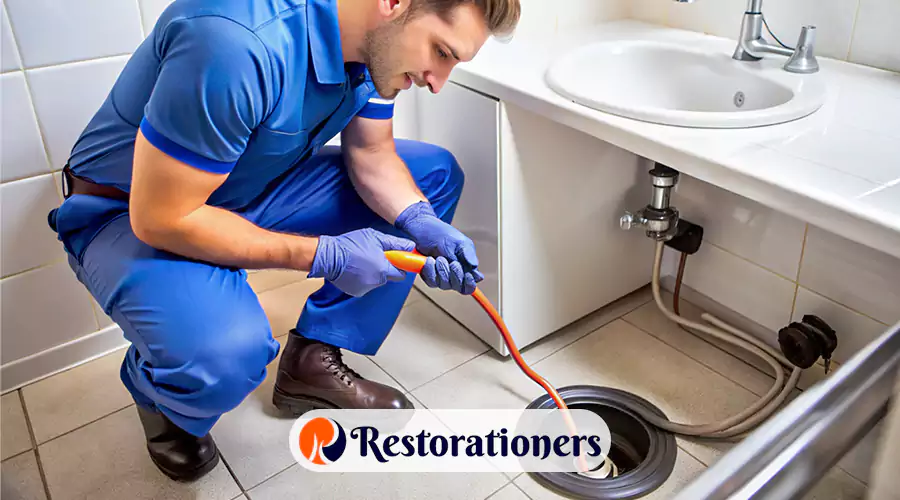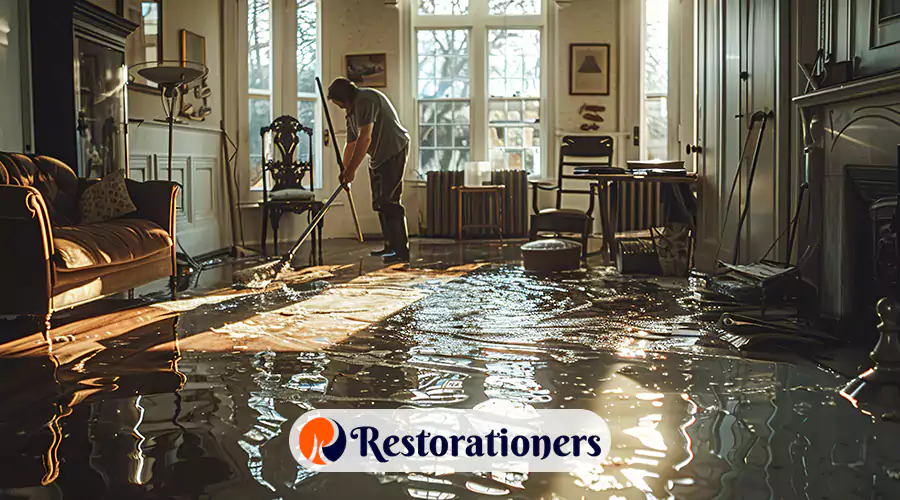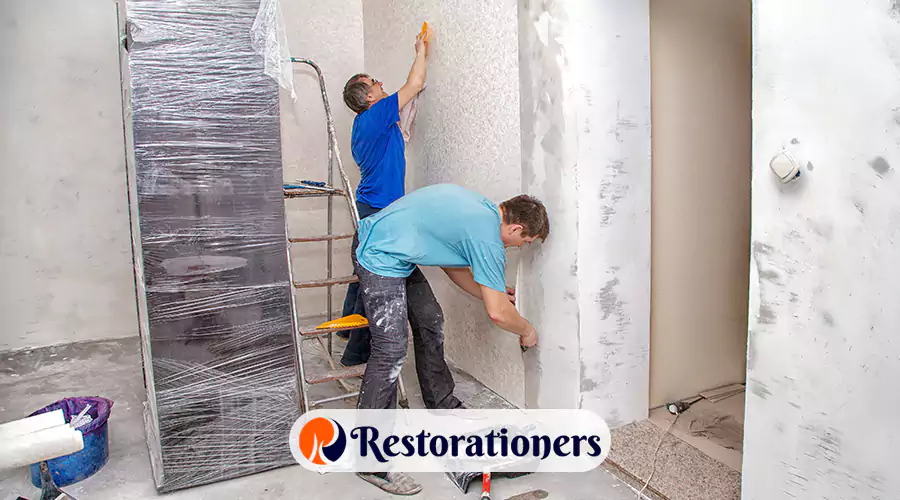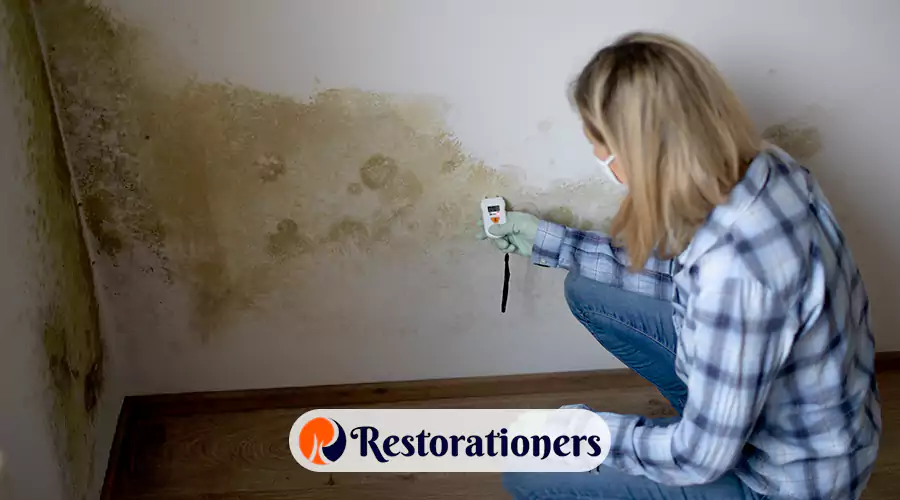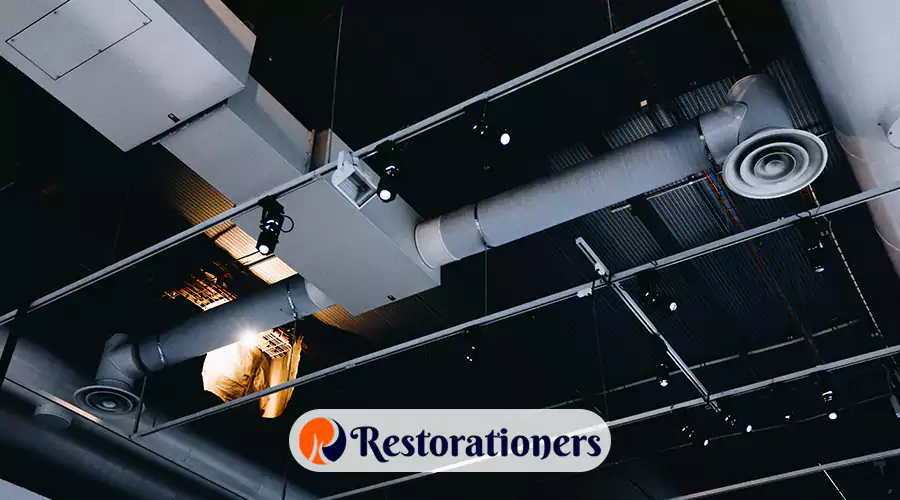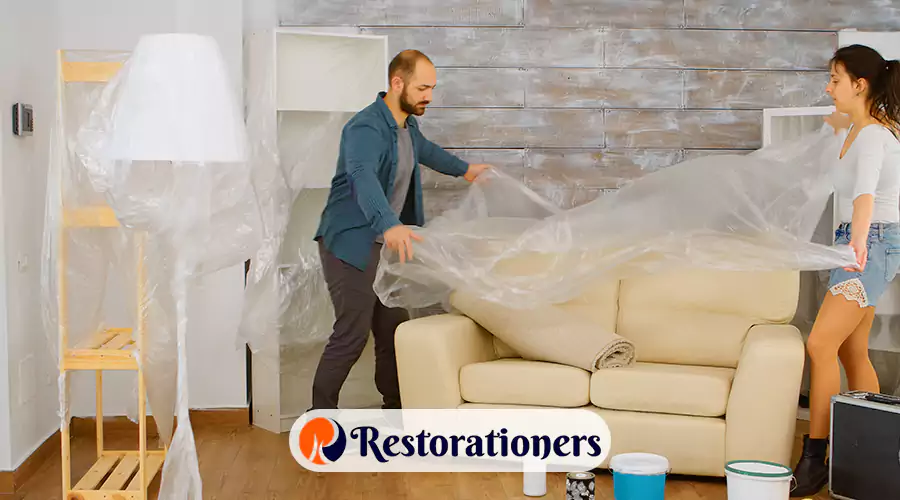Mold is a type of fungus that thrives in damp, humid environments, and it is one of the most common issues homeowners face. It can develop in homes, workplaces, and virtually anywhere moisture lingers. From basements to bathrooms, mold spreads quickly if conditions are favorable, making it a stubborn problem once it takes hold.
Unfortunately, mishandling mold can worsen the situation. Many homeowners assume it is just a simple cleaning task, but disturbing mold colonies without proper precautions can release countless microscopic spores into the air. This not only spreads contamination to other parts of the home but also puts your health at risk.
That’s why understanding mold from a professional perspective is invaluable. Professionals view mold as more than just a surface stain; they see it as a biological contaminant that requires strategic removal and prevention. By approaching mold with the right knowledge and techniques, homeowners can protect both their property and their health.
Mold may seem small, but its effects can be serious. By handling it safely and following the right steps, homeowners protect not only their property but also their health.John Davis
Types of Molds
Before handling the mold, you need to know how many types of mold are.
Black Mold (Stachybotrys chartarum)
Black mold is often the most feared type due to its association with severe health effects. It typically appears dark green to black with a slimy texture, and it thrives in areas with prolonged water damage, such as Drywall, insulation, or carpet. This mold releases mycotoxins, which can contribute to respiratory issues, making it especially concerning in homes with children or elderly residents.
Aspergillus
Aspergillus is very common indoors and comes in various colors, ranging from green to yellow or even white. It often grows on damp walls, HVAC systems, or even stored food. While some species are relatively harmless, others can cause allergic reactions and infections in vulnerable individuals. Its ability to grow in ventilation systems makes it particularly challenging.
Penicillium
Recognized by its blue or green appearance, Penicillium often develops on materials like wallpaper, upholstery, and insulation. It spreads quickly and produces a Musty Odor. While some species of Penicillium are useful in medicine (such as antibiotics), in homes it can lead to allergic reactions and respiratory issues.
Cladosporium
Cladosporium is usually olive-green or brown and can grow on both warm and cold surfaces, such as wood, fabrics, and HVAC ducts. It is not considered as toxic as black mold, but it can trigger allergy-like symptoms, including skin rashes and respiratory irritation. Its resilience across different temperatures makes it one of the more persistent molds found indoors.
Key takeaway: Not all molds are equally hazardous, but all require caution and safe handling to prevent health risks.
Reasons for Mold Growth
Moisture intrusion
You’ll see this more than you think. Water sneaks in through a tired roof, window gaps, or small foundation cracks and lingers in drywall and framing. Good mold handling starts with a simple rule: find and stop the water first. If you try to mold handle only the surface spots while moisture keeps slipping in, new growth will pop up behind the paint and trim.
Leaks
Slow plumbing drips—under sinks, behind showers, at fridge lines—quietly soak wood and gypsum. Here’s the pro sequence I want you to follow: fix the leak, verify dry-out with a moisture meter (or let a pro do it), then remove or clean what’s affected. If you mold handle the stain before fixing the drip, you’re just pressing pause—not stop—on the problem.
Humidity
Bathrooms, kitchens, and basements often run humid from daily life. Once indoor RH creeps above ~60%, mold gets comfortable. Friendly tip for solid mold handling: keep a simple hygrometer, run bath and kitchen exhaust fans for 20–30 minutes after use, and add a dehumidifier where needed. Control humidity, and you won’t be mold handling the same area every month.
Poor Ventilation
Stale air in attics, crawl spaces, and closets traps moisture. That’s when condensation starts on wood and insulation. Your professional play here is better airflow—clear soffit vents, ensure attic fans work, and avoid blocking returns with storage. Improve ventilation, and you won’t have to mold handle those repeat patches season after season.
Flooding
After storms or appliance failures, porous materials act like sponges. Carpets, pads, drywall, and MDF may look dry on the surface but stay wet inside. Proper mold handling means moving fast: extract water, run dehumidifiers and air movers, and remove what can’t be saved. If you only mold handle what you can see, hidden mold will keep spreading out of sight.
How Building Materials Contribute?
Building materials play a critical role, too. Porous materials like carpet, drywall, and wood absorb moisture easily and act as long-term mold reservoirs. Fixing the source of moisture is always as important as the removal process itself.
Wood, paper-faced drywall, insulation, carpet, and upholstery are porous and feed mold easily. A practical mold handling approach sorts materials by porosity: non-porous (often clean and keep), semi-porous (clean/dry if feasible), and porous (often remove/replace). Choose the right way to mold handle each material, and you cut off mold’s food source.
Fix the Moisture Source Always
Here’s the friendly bottom line: if the water problem stays, the mold stays. The golden rule of mold handling is “dry first, then remediate.” Track down the leak, humidity, or ventilation issue before—or at least alongside—any cleaning or removal. Do that, and you won’t be mold handling the same spots again and again.
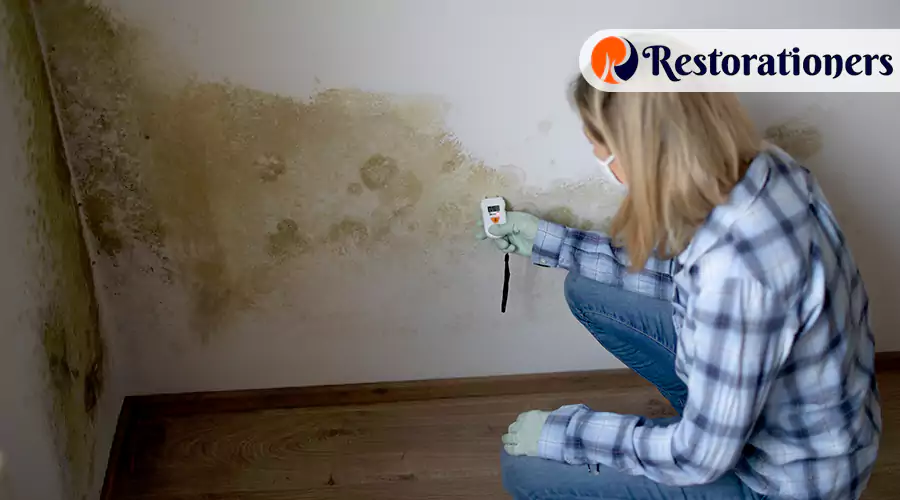
Health Risks of Mold Exposure
Short-Term Effects
Short-term exposure can trigger allergic reactions, respiratory irritation, and eye or skin problems. Homeowners often notice sneezing, coughing, itchy eyes, or rashes after being near mold.
Long-Term Risks
Prolonged exposure may lead to asthma, chronic bronchitis, and complications with the immune system. In some cases, individuals may develop heightened sensitivity, making even small exposures problematic.
Certain groups are more vulnerable than others. Children, the elderly, and people with compromised immune systems are at greater risk because their bodies cannot fight off mold-related stress as effectively. For these groups, even a minor mold problem can have serious health consequences.
Safe Mold Handling Practices
Protective Measures
When addressing mold, always use personal protective equipment (PPE) such as gloves, goggles, and N95 respirators. Seal off work areas with plastic sheeting to prevent spores from spreading and consider using HEPA Filtration to capture airborne particles.
For small mold problems (less than 10 square feet), careful cleaning with appropriate mold cleaners may suffice. Non-porous surfaces can often be scrubbed and disinfected, but porous materials like drywall may need removal.
The key is to know when removal is necessary versus cleaning. Attempting to clean porous materials often leaves spores behind, leading to regrowth. Improper handling only spreads contamination and makes the problem worse.
DIY vs. Professional Mold Handling
In small, contained areas, DIY mold removal may be safe if the homeowner uses proper precautions. Wiping down a bathroom tile or cleaning a window sill mold patch can often be handled independently.
However, DIY has serious limitations. Mold often hides behind walls, under flooring, or inside HVAC systems where homeowners cannot see or safely access. Without containment equipment, spores spread to new areas during cleaning attempts, which is why many turn to professional Emergency Restoration Services when the problem becomes extensive.
Professional remediation offers clear advantages. Experts use advanced tools like negative air machines, HEPA vacuums, and moisture meters. They follow strict safety standards and ensure mold removal complies with health guidelines. This makes professional services not just safer but more effective long-term.
Mold Handling Equipment
If you’re planning to do small-scale mold handling yourself, it’s important to understand that you’ll need the right equipment to stay safe and prevent the spread of spores. Having the proper tools not only protects your health but also makes the job more effective. Here are some essentials:
- N95 Respirator Mask – Protects your lungs from inhaling harmful mold spores during cleaning.
- Protective Gloves – Keeps your hands safe from direct contact with mold and harsh cleaning agents.
- Safety Goggles – Shields your eyes from spores and chemical splashes.
- Plastic Sheeting & Tape – Used to seal off the work area and prevent spores from spreading to other parts of your home.
- HEPA Vacuum – Captures mold spores and fine dust particles that regular vacuums cannot trap.
- Scrub Brushes & Disposable Rags – Essential for physically removing mold from non-porous surfaces.
- Spray Bottles with Mold Cleaner or Detergent Solution – Helps you apply cleaning agents evenly and effectively.
- Dehumidifier or Fans – Assists in drying the area after cleaning to discourage mold from returning.
By using the right equipment, you’re not just cleaning—you’re handling mold like a professional, protecting both yourself and your home.
When to Call a Professional Mold Removal Company?
Mold Area Larger than 10 Square Feet
Any mold problem exceeding 10 square feet is too large for safe DIY removal. At that scale, containment and specialized equipment are necessary.
Mold in HVAC Systems, Behind Walls, or Recurring Growth
If mold is inside ducts, behind drywall, or continues returning after cleaning, professional intervention is critical. These hidden sources require advanced detection and removal methods.
Strong, Widespread Musty Odors
Persistent odors signal mold growth beyond visible areas. Professionals can trace these odors to hidden colonies.
Health Symptoms Linked to Mold Exposure
If residents develop unexplained allergies, asthma flare-ups, or skin/eye irritation, it may be mold-related. A professional should be called immediately to address the root cause.
Preventing Future Mold Growth
The best defense against mold is prevention. Moisture control and proper ventilation are essential. Use exhaust fans in bathrooms and kitchens, and ensure crawl spaces and attics have adequate airflow.
Keeping indoor humidity below 50% helps greatly. Dehumidifiers are an effective tool, especially in damp basements.
Routine inspections of plumbing, roofing, and HVAC systems help catch potential issues early. Repairing leaks immediately prevents water from seeping into porous materials. By staying proactive, homeowners can avoid recurring mold problems.
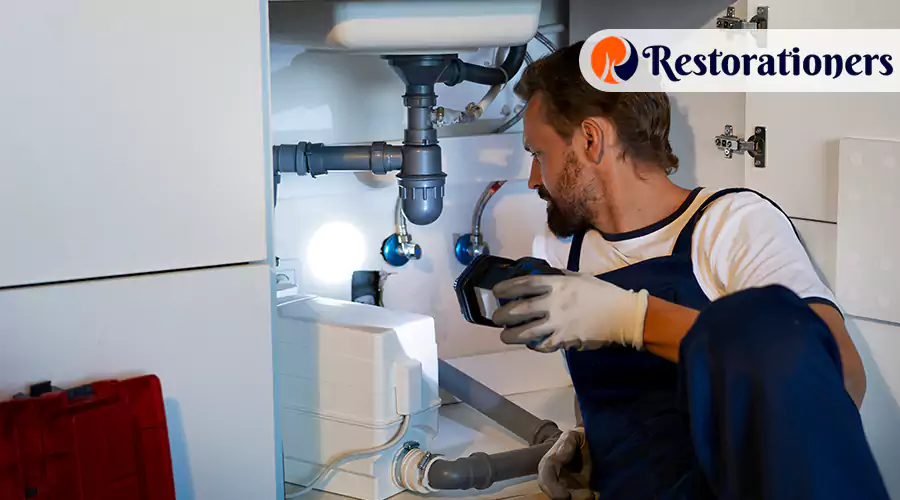
Common Mistakes to Avoid
Painting Over Mold
Painting over mold does not solve the problem. The mold will continue to grow underneath, eventually resurfacing and damaging the paint.
Using Bleach on Porous Materials
Bleach may kill surface mold, but it does not penetrate porous materials like drywall or wood. This leaves spores intact and ready to regrow.
Ignoring Hidden Sources of Water
Without eliminating leaks or sources of moisture, mold will always return. Addressing water intrusion is the foundation of successful remediation.
Ventilating Incorrectly During Cleaning
Opening windows without sealing the work area can spread spores throughout the home. Containment and proper ventilation methods are critical during cleaning.
Would you like me to also prepare a short checklist version of this guide (like a homeowner’s quick-reference sheet), alongside this full article? That could be handy for day-to-day use.
 Damage-Specific RestorationGeneral Restoration ServicesSpecialized RestorationCleanup & Removal ServicesBack to Main MenuDamage-Specific RestorationWater Mitigation Water Damage Flood Damage Basement Flood Clean Up Storm Damage Restoration Hurricane Damage Restoration Winter Storm Damage Restoration Water Leak Detection Services Fire Damage Smoke Damage Restoration Soot Removal Mold Damage Mold Remediation Biohazard Cleanup Earthquake Restoration Mudslide Damage Restoration Disaster RestorationBack to Main MenuGeneral Restoration ServicesEmergency Restoration Services Commercial Restoration Services Residential Restoration Services Advanced Restoration Building Restoration House Restoration Restoration Contractors Structural Restoration 24 Hour Emergency Water Damage RestorationBack to Main MenuSpecialized RestorationDocument Restoration Hardwood Floor Refinishing Marble Restoration Kitchen Restoration Bathroom Restoration Roof Restoration Wood Restoration Wood Floor Restoration Tile Restoration Concrete Restoration Foundation RestorationBack to Main MenuCleanup & Removal ServicesOdor Removal Services Air Duct Cleaning Hazardous Waste Disposal Asbestos Abatement Demolition Contractors Emergency Board Up
Damage-Specific RestorationGeneral Restoration ServicesSpecialized RestorationCleanup & Removal ServicesBack to Main MenuDamage-Specific RestorationWater Mitigation Water Damage Flood Damage Basement Flood Clean Up Storm Damage Restoration Hurricane Damage Restoration Winter Storm Damage Restoration Water Leak Detection Services Fire Damage Smoke Damage Restoration Soot Removal Mold Damage Mold Remediation Biohazard Cleanup Earthquake Restoration Mudslide Damage Restoration Disaster RestorationBack to Main MenuGeneral Restoration ServicesEmergency Restoration Services Commercial Restoration Services Residential Restoration Services Advanced Restoration Building Restoration House Restoration Restoration Contractors Structural Restoration 24 Hour Emergency Water Damage RestorationBack to Main MenuSpecialized RestorationDocument Restoration Hardwood Floor Refinishing Marble Restoration Kitchen Restoration Bathroom Restoration Roof Restoration Wood Restoration Wood Floor Restoration Tile Restoration Concrete Restoration Foundation RestorationBack to Main MenuCleanup & Removal ServicesOdor Removal Services Air Duct Cleaning Hazardous Waste Disposal Asbestos Abatement Demolition Contractors Emergency Board Up